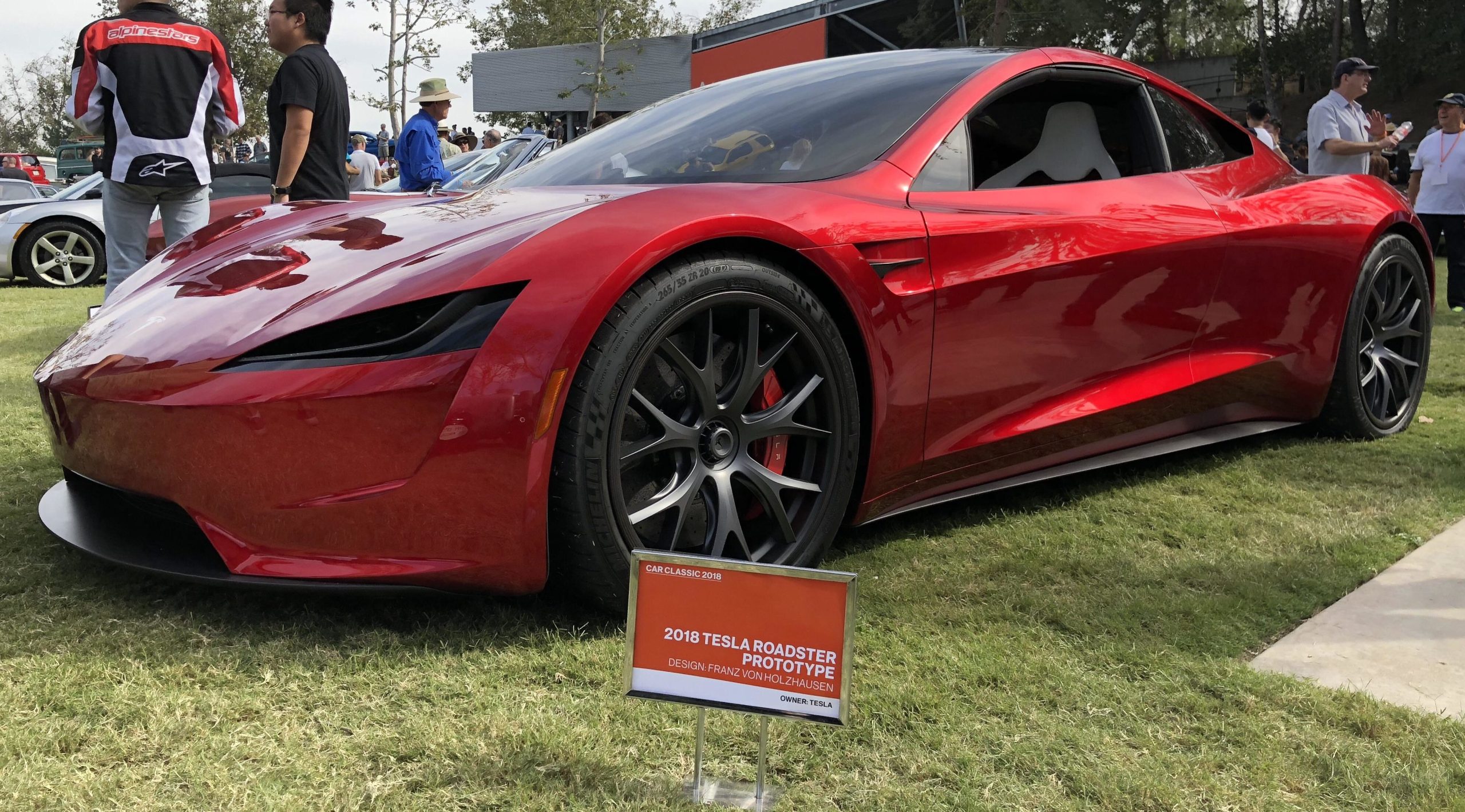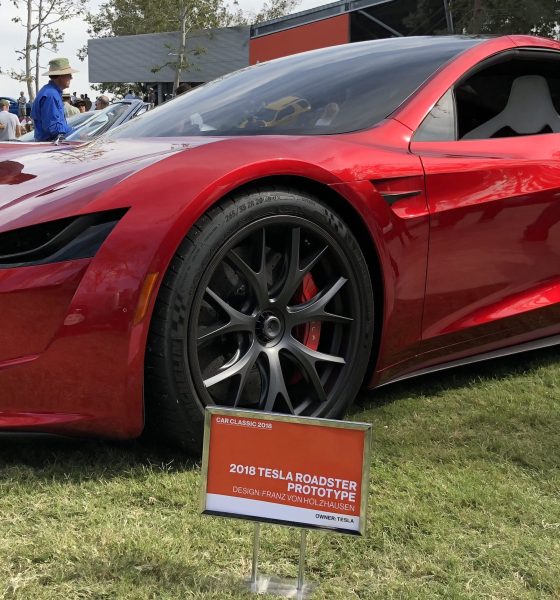

Lifestyle
Should Tesla have ended its Referral Program?
Tesla’s long-running and generous referral program came to an end on February 2, with CEO Elon Musk citing too much cost to the company’s vehicles, especially the Model 3. The system that rewarded so many with so much was finally concluded, but should it have been?
Teslanomics host and Tesla owner-enthusiast Ben Sullins noted in a recent video that the electric carmaker maybe – just maybe – made the wrong decision when it retired its referral program. Tesla’s referral program actually compares favorably to initiatives of other carmakers like General Motors when it comes to return of investment, notes Ben in his analysis. Case in point: GM spent around $3.24 billion in advertising in 2017 versus its auto revenue of $146 billion during the year. This translates to a 45x ROI, meaning that for every dollar the automaker spent on advertising, GM got $45 in revenue.
Tesla, on the other hand, has not released the actual costs of the referral program, but considering the price of the approximately 160 free next-gen Roadsters that Tesla will give out, the Teslanomics host estimates the program to have cost Tesla around $32 million, at least considering the costs associated with the program’s most prolific prize. Compared with the $17.63 billion in auto revenue that Tesla reported for 2018 in its recent Update Letter, the company’s $32 million cost for the free Roadsters actually gives a healthy 550x ROI. This means that for every dollar Tesla spent on the referral program’s largest prize, the company received $550 back in return.
Ben also noted that among automakers in the United States, Tesla is among the ones with the least advertising spending per vehicle sold, at just around $106. This is lower than Porsche’s $161 advertising spending per car, and far below Volkswagen’s $1,211 spending per vehicle sold.
Ultimately, the Tesla owner-enthusiast concluded that it would probably be best for the electric car maker to bring back its referral program, though in a more balanced form. This would actually be a pretty good idea, considering that the story of Tesla’s referral system is a classic tale of a good idea that eventually became unsustainable in the face of growth. A great way to illustrate this would probably be a poll that Teslarati ran after Elon Musk’s announcement last month. Based on the results of our poll, the majority of voters were actually on board with the referral program’s retirement.
Tesla’s Referral Program is coming to an end …
— TESLARATI (@Teslarati) January 19, 2019
It should be noted that Ben and other social media influencers have helped spearhead tremendous word-of-mouth sales for Tesla, while also leveraging their following as a way to gain the necessary referrals to win the upcoming supercar. Some twice. Apart from this, the Teslanomics host’s computations for the rewards system only includes the price of the Roadster and doesn’t take into account other factors connected to the program, such as logistics, developments costs, and other time value costs involved in the production and fulfillment of prizes.
It would be easy to point fingers at who or what is really responsible for the end of Tesla’s generous referral program. It could be influencers who utilized their platforms of choice to refer dozens or even hundreds of new customers. It could also be the Model 3 owners, whose lower-margin vehicles practically flooded the system, rendering it unsustainable. Overall, the fall of the referral program is simply due to Tesla’s inability to balance its rewards system. Perhaps capping the prizes at a point (stopping at one Roadster would have been a great idea, or giving lower-tier prizes for lower-margin vehicles) would have solved the issue. Nevertheless, it would be up to Tesla now if it decides to roll out a similar, more balanced program in the near future.
Watch Ben Sullins’ take on the retirement of Tesla’s referral program in the video below.

Lifestyle
Tesla Model S Plaid battles China’s 1500 hp monster Nurburgring monster, with surprising results
There is just something about Tesla’s tuning and refinement that makes raw specs seem not as game-changing.

The Tesla Model S Plaid has been around for some time. Today, it is no longer the world’s quickest four-door electric sedan, nor is it the most powerful. As per a recent video from motoring YouTube channel Carwow, however, it seems like the Model S Plaid is still more than a match for some of its newer and more powerful rivals.
The monster from China
The Xiaomi SU7 Ultra is nothing short of a monster. Just like the Model S Plaid, it features three motors. It also has 1,548 hp and 1,770 Nm of torque. It’s All Wheel Drive and weighs a hefty 2,360 kg. The vehicle, which costs just about the equivalent of £55,000, has been recorded setting an insane 7:04.957 at the Nurburgring, surpassing the previous record held by the Porsche Taycan Turbo GT.
For all intents and purposes, the Model S Plaid looked outgunned in Carwow’s test. The Model S Plaid is no slouch with its three motors that produce 1,020 hp and 1,420 Nm of torque. It’s also a bit lighter at 2,190 kg despite its larger size. However, as the Carwow host pointed out, the Model S Plaid holds a 7:25.231 record in the Nurburgring. Compared to the Xiaomi SU7 Ultra’s record, the Model S Plaid’s lap time is notably slower.
Real-world tests
As could be seen in Carwow’s drag races, however, Tesla’s tech wizardry with the Model S Plaid is still hard to beat. The two vehicles competed in nine races, and the older Model S Plaid actually beat its newer, more powerful counterpart from China several times. At one point in the race, the Xiaomi SU7 Ultra hit its power limit due to its battery’s temperature, but the Model S Plaid was still going strong.
The Model S Plaid was first teased five years ago, in September 2020 during Tesla’s Battery Day. Since then, cars like the Lucid Air Sapphire and the Xiaomi SU7 Ultra have been released, surpassing its specs. But just like the Model Y ended up being the better all-rounder compared to the BYD Sealion 7 and the MG IM6, there is just something about Tesla’s tuning and refinement that makes raw specs seem not as game-changing.
Check out Carwow’s Model S Plaid vs Xiaomi SU7 drag race video below.
Lifestyle
500-mile test proves why Tesla Model Y still humiliates rivals in Europe
On paper, the BYD Sealion 7 and MG IM6 promised standout capabilities against the Model Y.

BYD is seeing a lot of momentum in Europe, so much so that mainstream media has taken every opportunity to argue that the Chinese automaker has beaten Tesla in the region. But while BYD sales this year in Europe are rising and Tesla’s registrations remain challenged, the raw capabilities of vehicles like the Model Y are difficult to deny.
This was highlighted in a 500-mile challenge by What Car? magazine, which showed that the new Tesla Model Y is more efficient, cheaper to run, and more reliable than rivals like the BYD Sealion 7, and even the nearly 400 KW-charging MG IM6.
Range and charging promises
On paper, the BYD Sealion 7 and MG IM6 promised standout capabilities against the Model Y. The Sealion 7 had more estimated range and the IM6 promised significantly faster charging. When faced with real-world conditions, however, it was still the Model Y that proved superior.
During the 500-mile test, the BYD nearly failed to reach a charging stop, arriving with less range than its display projected, as noted in a CarUp report. MG fared better, but its charging speeds never reached its promised nearly-400 kW charging speed. Tesla’s Model Y, by comparison, managed energy calculations precisely and arrived at each stop without issue.
Tesla leads in areas that matter
Charging times from 25% to 80% showed that the MG was the fastest at 17 minutes, while Tesla and BYD were close at 28 and 29 minutes, respectively. Overall efficiency and cost told a different story, however. The Model Y consumed 19.4 kWh per 100 km, compared to 22.2 for MG and 23.9 for BYD. Over the full trip, Tesla’s charging costs totaled just £82 thanks to its supercharger network, far below BYD’s £130 and MG’s £119.
What Car? Magazine’s testers concluded that despite BYD’s rapid sales growth and the MG IM6’s seriously impressive charging speeds, Tesla remains the more compelling real-world choice. The Model Y just offers stability, efficiency, and a proven charging infrastructure through its Supercharging network. And as per the magazine’s hosts, the Model Y is even the cheapest car to own among the three that were tested.
Watch What Car? Magazine’s 500-mile test in the video below.
Lifestyle
Tesla Cybertruck slapped with world’s least intimidating ticket, and it’s pure cringe
One cannot help but cringe and feel second-hand embarrassment at the idea of a person just driving around with a stack of these babies.

A Cybertruck parked at Stanford Shopping Center in California was recently hit with what might be the most try-hard piece of paper ever slipped under a wiper blade: a “fake citation” accusing the driver of supporting a “fascist car.”
The note, shared on X by Tesla staff program manager Ryan Torres, quickly made the rounds on X, where it quickly gained attention as an example of how not to protest.
The world’s least intimidating ticket
According to the citation, the supposed “violation” was “driving a fascist car.” The remedial action? Take the bus, call an Uber, or ride a bike. The note also dubbed Elon Musk a “chainsaw-wielding Nazi billionaire.” Now, protests against Tesla and Elon Musk have become commonplace this year, but one cannot help but cringe and feel second-hand embarrassment at the idea of a person just driving around with a stack of fake anti-Tesla/Musk citations.
Torres pointed out the irony himself in his post on X. Tesla currently employs over 140,000 Americans, and SpaceX has put the U.S. firmly back at the top of space technology. As Torres put it, maybe the person behind the world’s least intimidating ticket should “read a book on innovation before vandalizing” other people’s property.
Peak performative clownery
Not to mention that the fake ticket’s logic collapses under its own weight. EVs like the Cybertruck are literally designed to reduce emissions, not “destroy the economy.” If anything, Tesla has bolstered the United States’ economy by fueling jobs in engineering, manufacturing, and clean energy. It’s not the first time a Tesla has been the target of vandalism or politically charged notes, but this one stands out for sheer cringe value.
Torres summed it up neatly: “Peak clownery.” On that point, at least, the citation earns full marks. In a way, though, perhaps cringe fake tickets are not as bad as the literal firebombs that were being thrown at Tesla stores and cars earlier this year because some critics were gleefully misinformed about Elon Musk.








